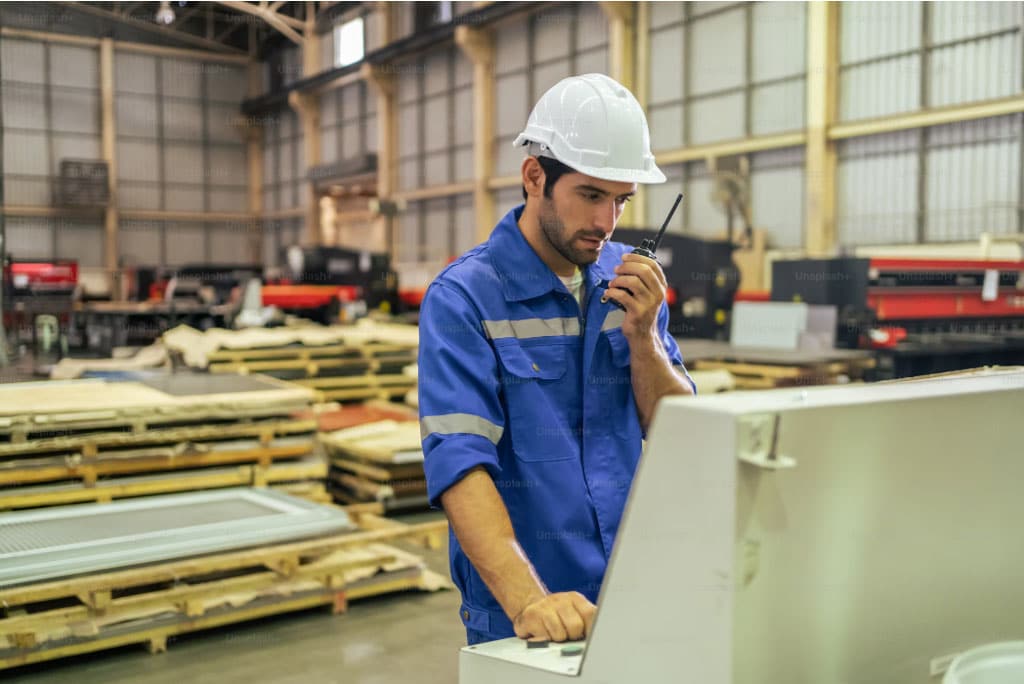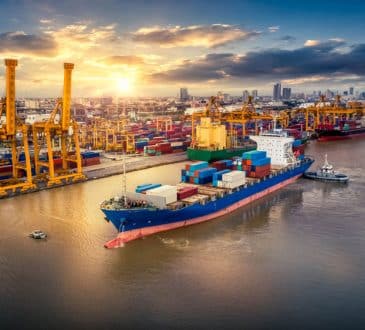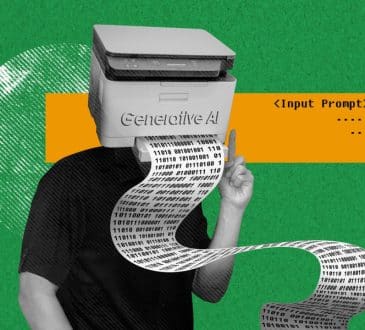The ProLift Rigging Company on the Speed of Innovation: How the Pace of Technological Advancement is Decreasing the Lifecycle of Industrial Machinery in Manufacturing

Manufacturing industries are undergoing a profound transformation as rapid technological advancements continue to reshape production processes. The ProLift Rigging Company notes how traditional machinery, once built to last for decades, is increasingly being replaced much faster due to automation, artificial intelligence, and digital connectivity. Companies are under pressure to integrate smart systems that enhance efficiency, making older equipment obsolete much sooner than anticipated. This shift poses financial and operational challenges, requiring manufacturers to rethink strategies for managing innovation cycles. With sustainability and cost-effectiveness playing a crucial role, businesses are exploring modular designs, predictive maintenance, and alternative ownership models to stay competitive. The manufacturing landscape is evolving toward a more agile and adaptive approach, where software updates and data-driven decisions help maximize equipment usability. Companies must balance innovation with long-term investment strategies as industries move towards automation and sustainability. The future of industrial equipment will depend on a combination of technological advancements, regulatory considerations, and the ability to remain flexible in an ever-changing market.
Evolution of Industrial Machinery in Manufacturing
Manufacturing has transformed as rapid technological advancements continue to reshape the industry. Machinery that once lasted for decades is now being replaced much faster due to innovations in automation, artificial intelligence, and digital connectivity. The shift toward smart factories has made traditional equipment less viable, pushing manufacturers to adopt more advanced solutions.
Companies that once relied on durable, long-term investments in industrial equipment now need continuous upgrades. Many businesses are integrating intelligent systems that enhance efficiency and shorten older machines’ relevance. Production lines must evolve quickly in sectors like automotive and electronics to keep up with shifting market demands and emerging technologies. As industries seek to outpace competitors, the pressure to modernize machinery has never been more significant.
Digital transformation has accelerated this trend, making data-driven decision-making a core part of modern manufacturing. Cloud computing, real-time monitoring, and predictive analytics have changed machinery’s operations, leading to more frequent updates and replacements. As industries prioritize flexibility and efficiency, the traditional model of long-lasting industrial equipment is becoming a thing of the past.
Key Factors Behind Shorter Machinery Lifecycles
The rapid advancement of automation, artificial intelligence, and the Internet of Things has significantly reduced the lifespan of industrial machinery. Newer systems are designed more efficiently and precisely, making older models obsolete faster than ever. Companies that fail to adopt these innovations risk falling behind competitors who leverage cutting-edge technology for streamlined production and cost savings. The need for modern machinery is no longer just about efficiency; it has become a matter of survival in an increasingly competitive market.
Manufacturers are also under increasing pressure to keep up with fluctuating consumer demands and evolving market trends. Production equipment must be agile enough to accommodate frequent product changes in industries like pharmaceuticals and consumer electronics. This necessity for adaptability leads to shorter machinery lifecycles as companies replace or upgrade their equipment to maintain efficiency and stay competitive. The ability to reconfigure production lines quickly has become a key differentiator in fast-paced industries.
In addition, the push for sustainability and energy-efficient operations has made older machines less attractive. Governments and industry regulations encourage businesses to adopt eco-friendly technologies, prompting manufacturers to invest in newer models with reduced energy consumption and lower emissions. As innovation accelerates, the expectation for more efficient, intelligent, and flexible machinery continues to drive the need for frequent upgrades. The shift towards sustainability is an environmental concern and a financial imperative, as energy-efficient machines often lead to long-term cost savings.
Financial and Operational Challenges
Constantly upgrading machinery comes with significant financial implications. Investing in new equipment requires substantial capital, and frequent replacements can strain budgets, especially for smaller manufacturers. Companies must carefully weigh the benefits of innovation against the costs, ensuring that each investment aligns with long-term business goals. Sometimes, businesses delay upgrades, risking inefficiencies that could impact productivity and profitability. The challenge lies in finding the right balance between staying competitive and maintaining financial stability.
Beyond financial concerns, integrating new machinery into existing operations presents logistical hurdles. Compatibility issues with legacy systems, employee training requirements, and potential downtime during installation can disrupt production. In industries with tight schedules and just-in-time manufacturing models, even minor delays can have a cascading effect on supply chains and order fulfillment. The need for seamless transitions between old and new machinery has become critical to maintaining operational efficiency.
Balancing technological advancement with return on investment remains a persistent challenge. While modern machines offer improved performance and efficiency, the rate of obsolescence means companies must adopt strategies that maximize the lifespan of their investments. Finding ways to extend usability, whether through software updates or modular designs, has become a priority for manufacturers looking to remain competitive without excessive spending. Companies implementing proactive asset management strategies can mitigate financial risks while optimizing production capabilities.
Strategies for Managing Rapid Innovation Cycles
As technology continues to evolve at a relentless pace, manufacturers are seeking ways to make machinery more adaptable. One approach is designing equipment with modular components, allowing businesses to upgrade specific elements without replacing entire systems. This flexibility extends the machinery’s lifespan and reduces overall costs associated with frequent replacements. Companies that invest in modular designs can keep pace with technological advancements while minimizing capital expenditures.
Predictive maintenance has also become an essential strategy for prolonging equipment usability. By leveraging real-time data and machine learning, companies can anticipate potential failures before they occur. This proactive approach minimizes downtime and optimizes performance, ensuring that machinery remains operational for as long as possible. In industries with high production demands, predictive analytics has proven to be a game-changer in reducing disruptions and maintenance expenses. The ability to predict and prevent failures enhances productivity and reduces unplanned costs.
Alternative ownership models, such as leasing or equipment-as-a-service, are also gaining traction. Instead of making significant capital investments in machinery that may become obsolete within a few years, businesses are opting for flexible financial arrangements. These models allow companies to stay current with the latest technology while maintaining cost efficiency, reducing the risks associated with rapid innovation cycles. Organizations that leverage these financial models can allocate resources more effectively and focus on core business growth.
Long-Term Impact on Manufacturing Strategies
The increasing pace of technological change is reshaping how manufacturers plan for the future. Companies no longer rely solely on long-term capital investments but are instead adopting agile strategies that accommodate continuous advancements. This shift has led to a greater emphasis on software-driven solutions, where regular software updates complement hardware to enhance functionality over time. Adapting to changing technology trends has become crucial for staying ahead.
Artificial intelligence and data analytics are playing a crucial role in optimizing machinery lifespan. By analyzing performance metrics and usage patterns, businesses can make informed decisions about when to upgrade equipment and how to maximize efficiency. This data-driven approach is helping manufacturers strike a balance between innovation and cost management, ensuring they remain competitive without unnecessary expenditures. Companies that harness AI-driven insights can improve operational efficiency while reducing wasteful spending.
Industries that once followed rigid production models are now embracing adaptive manufacturing solutions. Factories are designed to accommodate rapid shifts in market demand, focusing on scalability and flexibility. This transformation improves operational efficiency and allows manufacturers to forecast industry trends better and respond to challenges with greater agility. Businesses that integrate adaptive manufacturing strategies can remain resilient in an era of constant change.
Future Outlook for Industrial Equipment
The next generation of industrial machinery is expected to prioritize automation, connectivity, and sustainability. As artificial intelligence and robotics advance, manufacturing processes will become more autonomous, reducing the need for manual intervention. This shift will enhance efficiency and reshape workforce dynamics, requiring employees to adapt to more technology-driven roles. Companies that prepare their workforce for automation will gain a competitive advantage in the evolving industrial landscape.
Businesses are also exploring ways to future-proof their investments, ensuring that machinery remains relevant despite rapid technological changes. Investing in equipment with upgradable software, cloud integration, and AI-driven optimization will be key to maintaining long-term value. Companies that adopt a forward-thinking approach will be better positioned to navigate the challenges of an increasingly fast-paced manufacturing environment. Strategic investment in adaptable machinery will be crucial for long-term sustainability.
While innovation remains a driving force, sustainability considerations are becoming equally important. Manufacturers are under pressure to develop energy-efficient machinery and adopt circular economy principles, where equipment is designed for reuse and recycling. Striking a balance between technological advancement and environmental responsibility will define the future of industrial manufacturing, influencing both corporate strategies and regulatory policies. Businesses that align innovation with sustainability will shape the next era of industrial progress.
Have you read?
Countries with the most gold reserves.
World’s Best Public Relations Agencies (Top PR Firms).
Countries with the highest human freedom.
World’s Safest & Most Dangerous Countries For Travelers.
Bring the best of the CEOWORLD magazine's global journalism to audiences in the United States and around the world. - Add CEOWORLD magazine to your Google News feed.
Follow CEOWORLD magazine headlines on: Google News, LinkedIn, Twitter, and Facebook.
Copyright 2025 The CEOWORLD magazine. All rights reserved. This material (and any extract from it) must not be copied, redistributed or placed on any website, without CEOWORLD magazine' prior written consent. For media queries, please contact: info@ceoworld.biz








